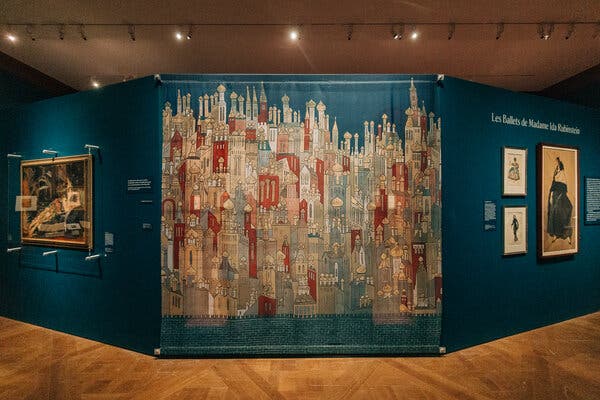
When Robinson McClellan was sifting through the Robert Owen Lehman collection of musical manuscripts at the Morgan Library & Museum in 2019, he came across a concentration of famous ballet scores from the early 20th century. The manuscripts were all connected to the Ballets Russes, the revolutionary dance company founded by the impresario Sergei Diaghilev in Paris, in 1909.
McClellan, an associate curator at the Morgan, realized that these scores, which had never been publicly shown together, offered an uncommon perspective on the Ballets Russes productions that defined and transformed a generation of artists. The scores, by Stravinsky, Debussy, Ravel and others, many heavily annotated, “give a visceral sense of the working process,” McClellan said.
The scores are now the basis of an elegant and edifying new exhibition, “Crafting the Ballets Russes,” at the Morgan through Sept. 22. All autograph manuscripts (that is, written in the composer’s hand), they are displayed next to choreographic documents, photographic records, portraits, letters, set designs, costume illustrations and drawings. Cumulatively, these objects reveal the Ballets Russes’ astounding level of collaboration across artistic mediums, from conception to completed production.

“The company was about this idea of synergy,” said the dance historian Lynn Garafola, who consulted on the exhibition. Diaghilev and the artists he worked with dreamed of productions in which music, dance and design, operating equally and at their highest level, would come together to create a triumphal whole. In 1914, the choreographer Michel Fokine wrote that he imagined this project as “the alliance of dancing with the other arts.”
McClellan and his team chose objects from other art forms that demonstrated that “visceral sense of a working process” and show the critical place of every discipline, with an emphasis on the creative role of women. Costume design, musical compositions and choreography all receive careful attention, giving behind-the-scenes glimpses into visionary productions like “Firebird,” “Petrouchka,” “Les Noces” and “Afternoon of a Faun.”
 Print
Print




